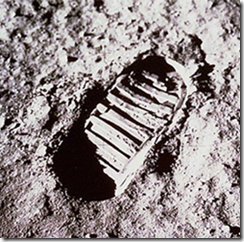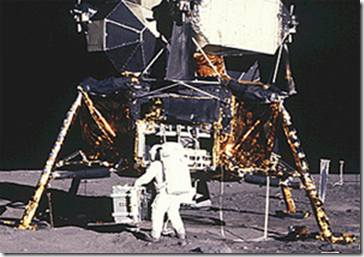 Recently, I was asked if fostering a culture of collaboration is simple and what makes a good foundation upon which to build a collaborative culture? Recently, we lost Neil Armstrong, the first man to walk on the moon. Thinking of this achievement reminds us that truly great things happen when we have all the right people and ensure that everyone’s aligned energy is working toward a common purpose.
Recently, I was asked if fostering a culture of collaboration is simple and what makes a good foundation upon which to build a collaborative culture? Recently, we lost Neil Armstrong, the first man to walk on the moon. Thinking of this achievement reminds us that truly great things happen when we have all the right people and ensure that everyone’s aligned energy is working toward a common purpose.
Many have written about how a leader can develop a collaborative culture in their organization. Corporate HR has initiated collaboration programs to change company culture. Consultants as change agents have created entire businesses by delivering programs that bring collaboration into their client’s organizations. A lot of good work has been done in this area, to be sure.
Collaboration Is Simple
I have observed three primary elements set the foundation for a collaboration is simple culture. Understanding these makes developing a collaboration is simple culture in your company, group, non-profit, or team much easier. The keys are: team, energy and purpose. To be specific, to build a collaboration is simple culture, and to reap the profound benefits of collaboration in your organization, you need the right team, aligned energy, and a common purpose.
The Right Team
On the surface, this may sound obvious. Clearly, you need team members that are competent and have skills. Competency is easy to measure and assess. You should put people on the team that have the competency and skills to do the job.
However, to have collaboration, you need people on your team that not only get along; your people must have both the propensity and the will to engage with each other as a team. Propensity is a “natural inclination”, and the will is the “faculty of conscious and deliberate choice of action.” You can call this fit, but I think it’s deeper than that.
Aligned Energy
The greatest drain on a team’s potential is to have one or more people failing to put their thought energy toward the team’s objectives. If you add up all positive energy, you get greater positive energy. This is the energy your team uses to get things done. If any of the numbers are negative, then you are subtracting, and your team has lower performance, and produces lesser outcomes.
Of course, you want people that think outside the box. Of course you DON’T want a team of mindless followers. However you DO want a team that engages all its thought energy in a forward direction that drives toward an objective. And, the more aligned that energy is, the more progress can be, and is, achieved.
When you have a team where everyone’s energy feeds others, and feeds off of other’s energy, then you truly have a collaborative environment that will produce great results and exceptional outcomes.
A Common Purpose
To have the right people with aligned energy, you must have a common goal or purpose. This one sounds easy, but to make it a common purpose, someone has to communicate, articulate and evangelize the goal. That leader must engage the team on a path aligned with the purpose.
In doing so, the leader must look for the right team members, and observe how all energy is aligned. As a plan to achieve a common purpose unfolds, and in some cases, the purpose evolves, it will become clear how well the energy is aligned and if the right people are on the team. The team and its leader(s) continually tune and optimize these three elements.
The Collaboration Equation
Like a three legged stool, you cannot have two of these elements, without the third
Think of maximum performance and optimal outcome from collaboration in terms of this equation:
sum(People 1, 2, 3,… n) + sum(Energy 1, 2, 3,… n) + sum(Purpose 1, 2, 3,… n) = Collaboration Level
Granted, this is somewhat subjective. Thinking through this quantitative approach is a way to identify gaps and quantify risk, and ultimately understand what to really worry about.
Using this process, one can see where coaching and mentoring is needed, where more understanding of the common purpose would benefit, and where igniting the energy of one individual is needed, or even the replacement of a team member.
A Word About Fit
Fit is commonly measured using personality assessments that a consultant or human resources believes will find the locus of an organization’s culture, and identify how well a person aligns with that locus. (A locus is “the center or source of activities and power or energy.”) The problem with these is that the consultant or HR may be measuring for the wrong locus. If you, as a leader, are trying to adjust the locus from one of lesser collaboration, to one of greater collaboration, you may miss the mark.
Why not be transparent and tell the team about the collaboration equation. Let them know that is the operational expectation? The equation is understandable and applicable by anyone . Good teams self-regulate the equation, if empowered to do so.
Friction vs. Tension
Some leaders will argue that “a little healthy friction is good.” That is totally wrong. Friction is negative energy, and it is a net-negative in the collaboration equation. Friction means you cannot achieve the same level of performance. Results become at risk. In business, friction in your organization gives competitors opportunity to steal your customers, erode market share, undermine product leadership, and more.
I’ve observed leaders introducing friction into a balanced team “just because.” When leaders introduce negative factors into the collaboration equation, the leader is setting an example. And, others will follow. This is a risky path to take.
On the other hand, creative tension comes from sharing ideas among the team. Shared ideas and the discussions that result from sharing introduces positive tension to thought and inspires new and better ideas. This initiates a cycle of natural and collective collaboration – in terms of team, energy and purpose – the collaboration equation. The result is a better outcome, and improved performance.
I wasn’t there, but I imagine that creative tension was a handy thing at NASA, especially during the Apollo 13 mission. I feel confident in saying that “healthy friction” would have been disastrous for that mission.
To Ponder
 Kennedy’s challenge to NASA to achieve something that was beyond man’s current limits to comprehend set the common purpose, ignited NASA’s aligned energy, and put the best team together. The outcome is nothing less than remarkable and inspiring.
Kennedy’s challenge to NASA to achieve something that was beyond man’s current limits to comprehend set the common purpose, ignited NASA’s aligned energy, and put the best team together. The outcome is nothing less than remarkable and inspiring.
If collaboration is this simple, why then do we spend so much time worried about it, teaching it, and developing it? Clearly, the best answer is that we need it, and know its value. But tactically, one answer is that it requires constant vigilance. It could be that we have some of the wrong members on our team. As leaders, it may be the case that we haven’t aligned all the team’s energy, and need to work on that. And it may be that we don’t have a common purpose or the purpose isn’t understood well enough to be adopted by all. Whatever it is, we can think in terms of these three elements, and work on the gap.
Leave a comment; tell readers your collaboration story.
Photo credits: NASA.










[…] Collaboration is simple and happens when we have all the right people and ensure that everyone's aligned energy is working for a common purpose. […]
Hi Andrew,
Thanks for providing the great thoughts. NASA and their adventure to the moon ended up driving decades of innovation and wide ranging commercialization for the US. Some of the keys to success at NASA included having a clear goal and stressing a team mentality. I read that throughout the Apollo program, individual team members were depended upon to speak up when they identified dangers that might derail the overall effort. Management’s duty is to set the goals, but there is often an unmet responsibility to listen to and value the feedback from the entire team. As projects become more complex those responsibilities seem to grow in importance.
John